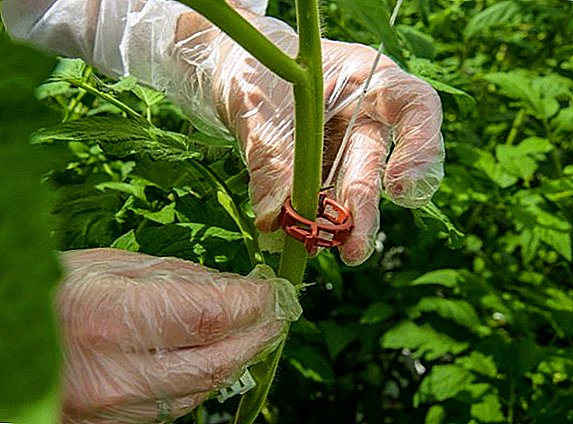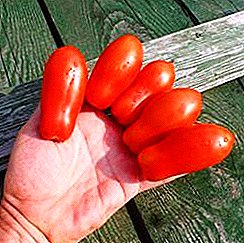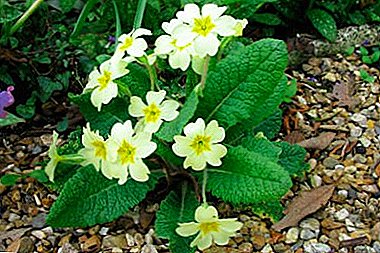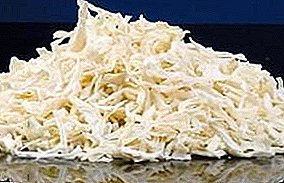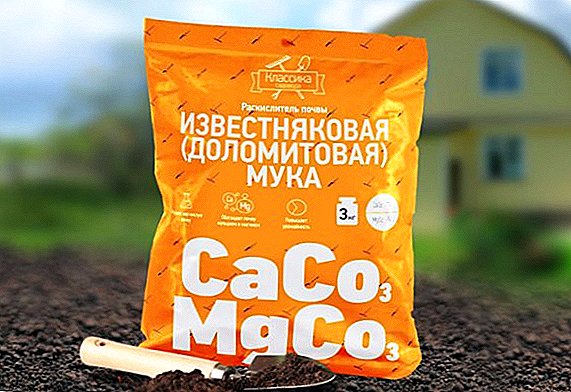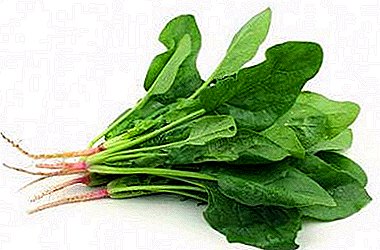
Spinach is not a frequent visitor on the tables of many families. This is a vegetable annual herb. Wild spinach grows in Afghanistan, Turkmenistan and the Caucasus.
It is not as popular as carrots or potatoes, but enjoys great fame in different countries of the world, because has a large number of nutrients. It can be used and used to combat excess kilos.
All this is due to its chemical composition. What is in the composition and how many calories in a fresh plant? This is what you will learn from this article.
Chemical composition and nutritional value (KBD) per 100 grams
What is rich plant?
100 grams of fresh spinach contain:
Vitamins
What is the content of vitamins in the plant?
- PP - 0.6 mg: takes part in oxidation processes, helps to form immunity.
- Beta-carotene - 4.5 mg: will increase stress resistance, protect against aging, reduce the risk of developing oncology, improve eyesight, support healthy mucous membranes, and improve the functioning of the sex glands.
- Vitamin A - 750 mcg: regulates the production of protein, normalizes metabolism, protects against viral infections, has a healing effect, makes the skin firm, smooth and treats skin diseases.
- Thiamine (B1) - 0.1 mg: takes an active part in the exchange of fats, proteins and carbohydrates, protects cells from the toxic effects of oxidizing products, improves brain function, memory, attention, thinking, stimulates the growth of bones and muscles, slows aging, improves appetite, reduces toothache.
 Riboflavin (B2) - 0.25 mg: converts fats and carbohydrates into energy, increases the absorption of other substances, strengthens the immune system, increases brain activity, restores the thyroid gland, improves visual acuity, increases hemoglobin.
Riboflavin (B2) - 0.25 mg: converts fats and carbohydrates into energy, increases the absorption of other substances, strengthens the immune system, increases brain activity, restores the thyroid gland, improves visual acuity, increases hemoglobin.- Pantothenic acid (B5) - 0.3 mg: it forms antibodies, improves the absorption of other substances, helps produce the adrenal hormone, helps with stress, inflammation, burns fat.
- Pyridoxine (B6) - 0.1 mg: normalizes glucose in the blood, improves performance, heals the cardiovascular system, prevents the occurrence of ischemia, heart attack, atherosclerosis.
- Folic acid (B9) - 80 µg: It has a beneficial effect on the liver and digestion, transmits impulses between the cells of the central nervous system, regulates the excitation and inhibition of the nervous system, is necessary for the normal development of the fetus and normal pregnancy.
- Vitamin C - 55 mg: actively participates in the formation of blood elements, assists the immune system in the fight against pathogens, participates in metabolism, increases the elasticity of cell walls, removes cholesterol and heavy metals.
- E - 2.5 mg: fights aging, prevents the process of pathological peroxidation, compensates for the lack of other vitamins.
- Phylloquinone (K) - 482.9 mcg: It has a high healing effect, participates in the work of the gastric bladder and liver, normalizes metabolism, neutralizes poisons, which helps protect against the destruction of liver cells and the formation of tumors.
- Biotin (H) - 0.1 mg: participates in all metabolic processes, improves metabolism, organizes proper cell growth, improves hair and skin, heals bone marrow tissues, reduces muscle pain.
- Choline - 18 mg: restores liver tissue, normalizes fat metabolism, improves short-term memory, removes cholesterol, strengthens cells, produces insulin.
- Niacin equivalent 1.2 mg: participates in the processes of metabolism, protein synthesis, production, accumulation and use of energy in the cells of the body.
Macronutrients
- Potassium - 774 mg: activates the brain, strengthens muscles, protects the heart and blood vessels, normalizes pressure, strengthens bones, eliminates muscle spasm.
- Magnesium - 82 mg: strengthens tooth enamel, improves dental health, relieves muscle and joint pain, regulates the amount of sugar in the blood, improves respiratory functions, controls growth, lowers blood pressure, relieves fatigue and migraine, controls heart rhythm.
- Calcium - 106 mg: supports healthy teeth and bones, normalizes blood clotting, prevents blood clots, normalizes the endocrine system, relieves muscle spasms, cramps and twitches.
- Sodium - 24 mg: ensures normal growth and condition of the body, participates in the transport function of the blood, contracts muscles, dilates blood vessels, and does not allow for thermal or sun stroke.
- Phosphorus - 83 mg: corrects the metabolism, prevents the development of chronic diseases, is involved in the formation of bones, restores the nervous system.
Trace elements
 How much iron, zinc, copper and other trace elements in the plant?
How much iron, zinc, copper and other trace elements in the plant?
- Iron content - 13.51 mg: it provides tissue respiration, controls the level of cellular and systemic metabolism, carries oxygen, maintains immunity, creates nerve impulses and conducts them along the nerve fibers, ensures the growth of the body.
- Zinc - 0.53 mg: strengthens the immune system, renews the work of many organs, destroys microbes, forms phagocytes, renews cells, actively promotes protein synthesis, heals wounds, produces sebum.
- Copper - 13 mcg: it produces collagen, has anti-inflammatory effect, tidies the digestive system, protects bones from fractures, normalizes the functioning of the thyroid gland, boosts immunity.
- Manganese - 0.897 mg: returns muscle tone, prevents the development of diabetes, heals tissue quickly, improves growth, brain function and the formation of new cells.
- Selenium - 1 mcg: prevents cancer, improves blood circulation, reduces the number of free radicals, reduces inflammation, increases the body's resistance to diseases.
Essential Amino Acids
What else does spinach contain?
- Valin 0.120 - 0.161 g.
- Histidine 0.046 - 0.064 g
- Isoleucine 0.084 - 0.147 g.
- Leucine 0.150 - 0.223 g.
- Lysine 0.120 - 0.174 g
- Methionine 0.026 - 0.053 g.
- Threonine 0.092 - 0.122
- Tryptophan 0,039 - 0,042 g
- Phenylalanine 0.120 - 0.129 g.
Replaceable amino acids
- Alanin 0.110 - 0.142 g
- Arginine 0.140 - 0.162 g
- Aspartic acid 0,230 - 0,240 g
- Glycine 0.110 - 0.134 g
- Glutamic acid 0,290 - 0,343 g
- Prolin 0.084 - 0.112 g.
- Serine 0.100 - 0.104 g
- Tyrosine 0.063 - 0.108 g
- Cystine 0.004 - 0.035 g
Calorie fresh plant per 100 gr + BJU
How many proteins, fats and carbohydrates are in the plant?
- Fat - 0.39 g.
- Protein - 2.86 g.
- Carbohydrates - 3.63 g.
- Energy value per 100 g - 20.5 kcal.
The difference in composition
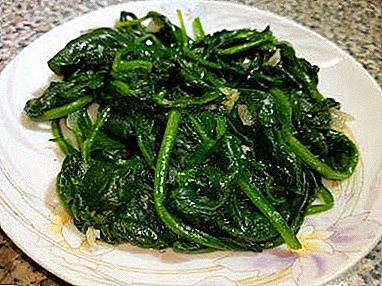 Cooked and Fresh Spinach.
Cooked and Fresh Spinach.Long-term processing destroys the B vitamins. Therefore, boiled spinach will have fewer beneficial vitamins. For maximum preservation of vitamins, cook for 3 to 7 minutes.
- Frozen and Fresh Spinach.
The composition of frozen spinach is no different from fresh. Frozen spinach even has an advantage. It is safer because it is frozen immediately after collection. Unlike fresh, in which nitrites appear during storage.
- Different types and varieties of spinach.
The chemical composition of spinach does not depend on the type or variety of plants. In all plants it is the same.
Plant compatible foods and dishes
Avocado and spinach improve eyesight. Spinach and orange will boost energy. The combination of spinach with cheese, bacon, cream, nutmeg promotes energy production and saturates the body with oxygen.
It is used for cooking:
- first and second courses;
- sauces;
- salads;
- cutlets;
- pancakes;
- drinks;
- FRESH.
If you have never used spinach for cooking your favorite dishes, then by all means correct this error. In addition to the incredible taste, you will also receive indispensable benefits for the body.


 Riboflavin (B2) - 0.25 mg: converts fats and carbohydrates into energy, increases the absorption of other substances, strengthens the immune system, increases brain activity, restores the thyroid gland, improves visual acuity, increases hemoglobin.
Riboflavin (B2) - 0.25 mg: converts fats and carbohydrates into energy, increases the absorption of other substances, strengthens the immune system, increases brain activity, restores the thyroid gland, improves visual acuity, increases hemoglobin. Cooked and Fresh Spinach.
Cooked and Fresh Spinach.